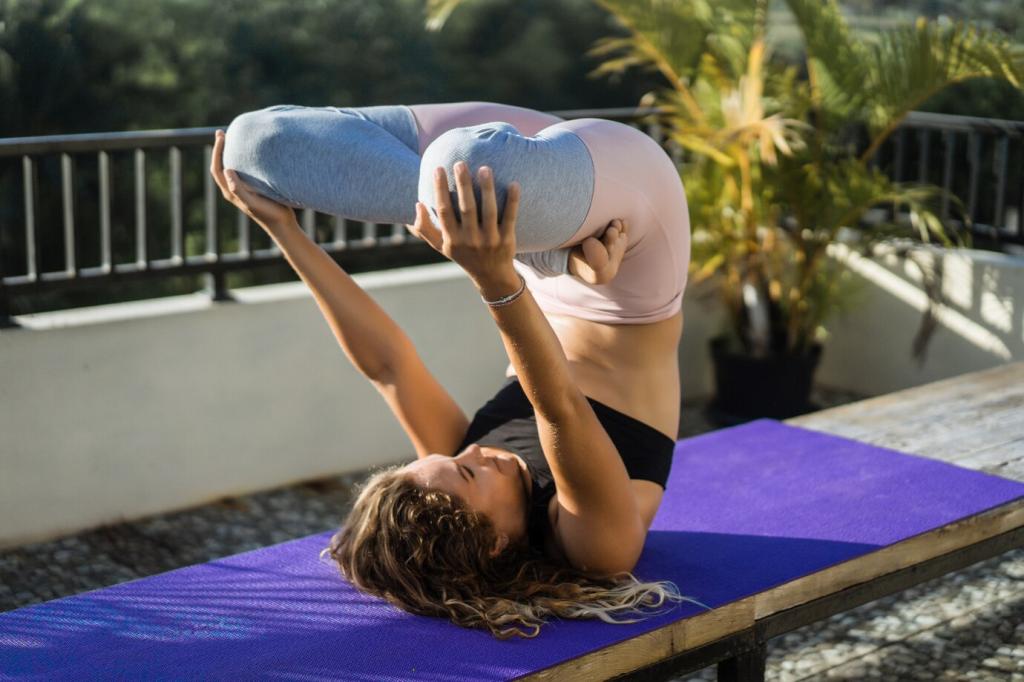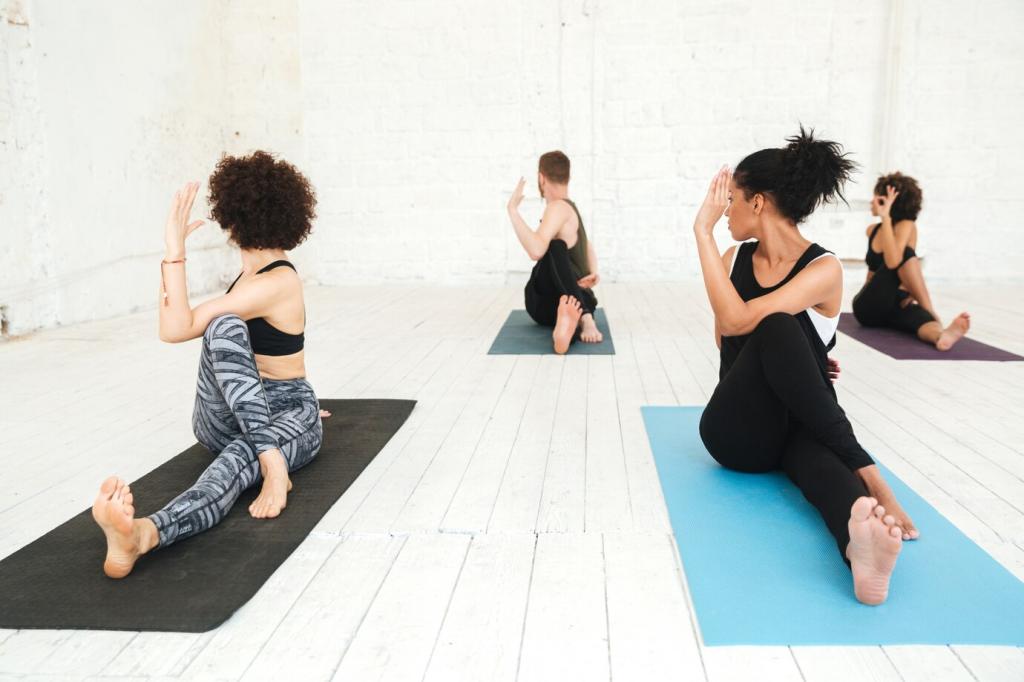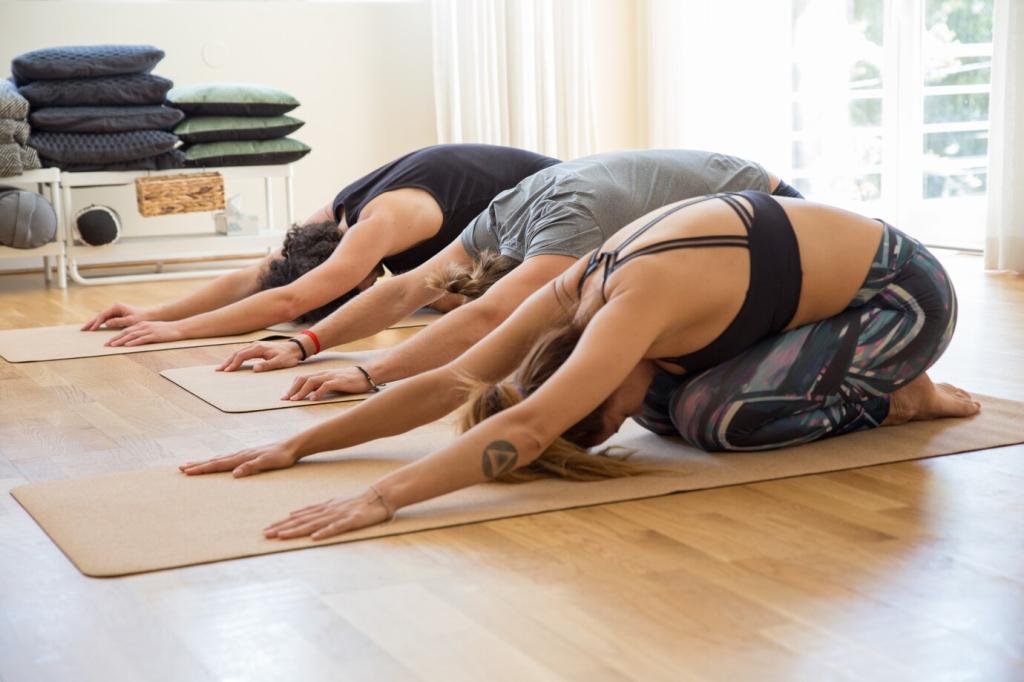Chosen theme: Boosting Athletic Endurance Through Yoga. Welcome to a space where breath, mobility, and mindful strength turn long efforts into sustainable victories. Join us, share your journey, and subscribe for weekly endurance-focused yoga plans.
Diaphragmatic Breathing for a Steady Pace
Practice belly-first breathing: expand the lower ribs, inhale for four steps, exhale for six to eight. This shifts workload from accessory muscles to the diaphragm, conserving energy late in efforts. Try it on your next run and report how your cadence feels.
Box Breathing Between Intervals
Use box breathing—four in, four hold, four out, four hold—between hard intervals to smooth heart rate spikes. Athletes notice calmer legs and clearer focus within minutes. Pair it with gentle shoulder rolls. Comment below with your favorite count pattern.
Nasal Breathing for Long Runs
Include nasal-only segments during easy miles. Nasal breathing naturally moderates pace, humidifies air, and trains CO2 tolerance, delaying that frantic, shallow pant. Build from two minutes to ten. Subscribe to follow our progressive nasal-breathing calendar.



Sequences That Build Aerobic Capacity
Perform six to twelve rounds at conversational breathing, linking movement to long exhales. Focus on even pacing through chaturanga and upward dog. Over weeks, extend duration, not intensity. Tell us how your heart rate responds compared with easy runs.
Sequences That Build Aerobic Capacity
Set a timer for twenty minutes of deliberate, unhurried vinyasa. Keep transitions smooth, gaze soft, and breath tethered. This gentle grind cultivates fatigue resistance. Vote in our poll: Which music tempo keeps you honest when the mind drifts?
Sequences That Build Aerobic Capacity
Treat the mat like a trail; increase your continuous flow by five minutes weekly until forty-five. Accumulate micro-fatigue, then recover. Share your progress chart, and we’ll feature a standout graph in next week’s roundup.
Strength-Endurance and Tendon Resilience
Hold Chair and Warrior II for sixty to ninety seconds, breathing evenly. The quads burn while you practice composure under load. Record your longest calm hold and tag us; we will cheer your milestone in the comments.

Strength-Endurance and Tendon Resilience
From Crescent to Half Split, lengthen under control for five-second descents. Eccentric work conditions hamstrings and calves, supporting late-race mechanics. Pair with gentle hamstring flossing. Tell us where you feel the difference after your next tempo session.
Recovery Rituals to Extend Training Volume
Post-Workout Restorative Sequence
Spend ten minutes in supported child’s pose, reclined bound angle, and gentle twist. Emphasize long exhales to boost parasympathetic tone. Athletes report better sleep and fresher legs. Try tonight and share your sleep score tomorrow.
Legs-Up-the-Wall for Venous Return
Elevate legs for eight to twelve minutes, breathing quietly through the nose. This simple pose encourages fluid return and calms the mind after heat or hills. Join our recovery challenge and comment how your calves feel afterward.
Yoga Nidra for Deep Recovery
Practice a twenty-minute yoga nidra once or twice weekly. Guided body scanning improves relaxation and may enhance heart rate variability. Track readiness alongside it for a month. Subscribe for our free audio and tell us your favorite script.
Mindset and Focus Under Fatigue
During slow flows, periodically pause to name heart rate, breath depth, and muscle tension without judgment. This awareness helps spot redlines early. Share the cue that most reliably brings you back when fatigue fogs decisions.
Mindset and Focus Under Fatigue
Choose a steady sequence and maintain the same breathing cadence from minute one to twenty. When anxiety rises, lengthen exhale slightly. Compare perceived exertion across sessions and comment on your most consistent cadence count.


